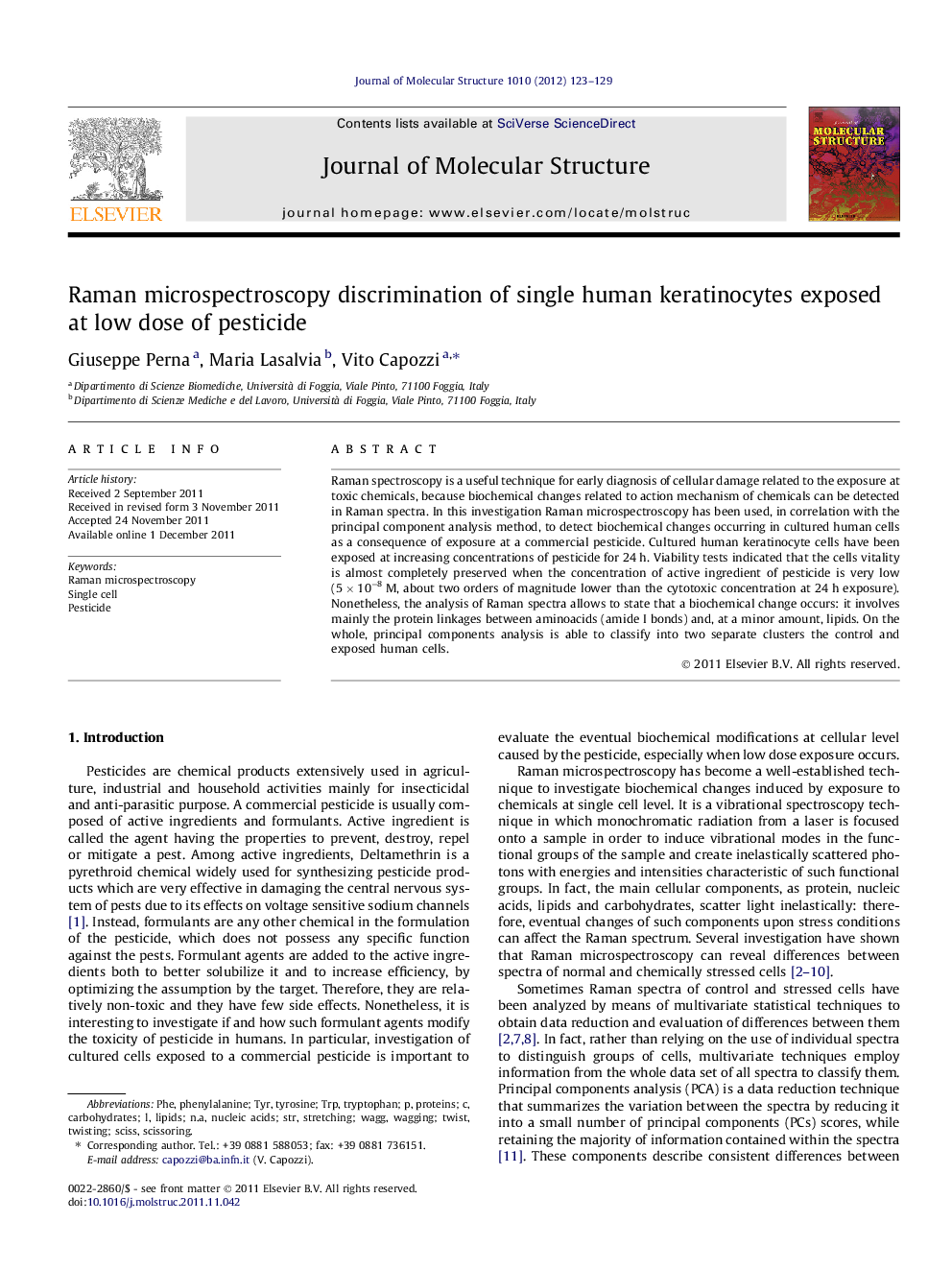| Article ID | Journal | Published Year | Pages | File Type |
|---|---|---|---|---|
| 1409987 | Journal of Molecular Structure | 2012 | 7 Pages |
Raman spectroscopy is a useful technique for early diagnosis of cellular damage related to the exposure at toxic chemicals, because biochemical changes related to action mechanism of chemicals can be detected in Raman spectra. In this investigation Raman microspectroscopy has been used, in correlation with the principal component analysis method, to detect biochemical changes occurring in cultured human cells as a consequence of exposure at a commercial pesticide. Cultured human keratinocyte cells have been exposed at increasing concentrations of pesticide for 24 h. Viability tests indicated that the cells vitality is almost completely preserved when the concentration of active ingredient of pesticide is very low (5 × 10−8 M, about two orders of magnitude lower than the cytotoxic concentration at 24 h exposure). Nonetheless, the analysis of Raman spectra allows to state that a biochemical change occurs: it involves mainly the protein linkages between aminoacids (amide I bonds) and, at a minor amount, lipids. On the whole, principal components analysis is able to classify into two separate clusters the control and exposed human cells.
► Formulant agents decrease the value of the cytotoxic dose of a commercial pesticide. ► Raman spectroscopy detects biochemical cellular modifications related to amide I bond. ► PCA technique reveals small variations due to lipids and proteins.
